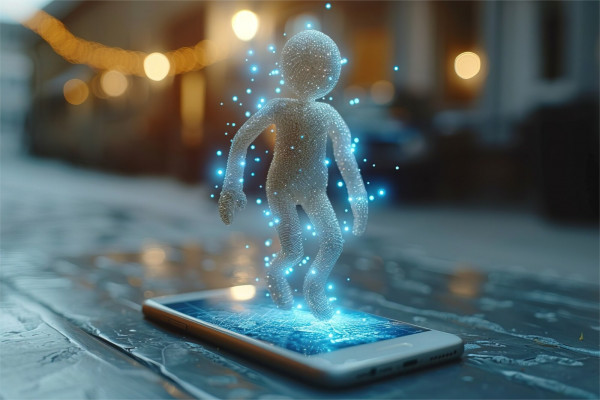The field of life sciences has long since tried to bridge this gap, but ultimately, technology has played the biggest role so far in bringing affordable, accessible health care to all people, no matter their class or status.
This article will look at how modern technology makes premium healthcare more accessible.
What Technology Offers Life Science?
3D printers. Biometric tools. Nanotechnology. Artificial intelligence. Machine learning.
In the 21st century, there have been a number of forces that have changed healthcare in ways that our ancestors could never have imagined. Not only has technology enriched our everyday lives, but it has also transformed the economy and changed the way we approach literally everything.
Patients in the 21st century are fortunate to benefit from incredible diagnostic tools, fast treatments with the aid of intelligent machines, and safer, more reliable healthcare thanks to artificial intelligence driving the decisions behind their treatment plans.
Professionals are now able to provide highly personalized medication according to the stomach biome of their patients and even more accurate forecasts of their future health complications thanks to epigenetic analysis tools.
Digital tools like the 3D printer and nanotechnology were once the stuff of science fiction. They are real today and offer a laundry list of practical applications that businesses are pushing today, thanks to innovation and profit-seeking ventures.
This sector is moving at a breakneck pace yet still needs to travel so far. Futuristic tools like nanotechnology have now become an inescapable part of modern life. Let’s look at what technology has made possible today.
Practical Applications of Technology in Modern Life Sciences
1. We can now create artificial cells.
Bioprinting and 3D printers have come together in the most exciting fashion to give birth to affordable, artificial human cells.
3D printers can now make liver cells that not only live, but also work in the human body for up to 40 days. In addition, cardiac tissue and bioprinted cartilage are now possible as well.
Most excitingly, STEM cells are within sight as well. These cells could be used to make any kind of human tissue, and in the future, they could be used to treat diseases. We are looking at the real possibility that patients in the future will be able to get whole body parts made from scratch.
2. We can now use nanotechnology to attack cancer cells.
Nanotechnology has long been envisioned as a medical tool. Today, nanobots and nanoparticles are real. Nanobots can do very precise jobs inside the human body, like getting rid of cavities in your teeth so you don’t lose them.
They can take medications and deliver them precisely to the problematic tissues in your body to achieve a precision never seen before. Practical applications include having the nanobots identify and destroy cancer cells while leaving normal tissue untouched.
They can focus on tumors in the body to slow down their growth or eliminate them entirely as well.
3. We can now sequence your genomes to very precisely understand your body.
Everyone’s body is different and reacts differently to different stimuli. How can you treat people with blanket solutions considering the vast number of individual differences that exist?
This is what genome sequencing is all about. Doctors can now go beyond the simple medical history of their patients to understand the underlying genes to better understand how they will react to various diets, lifestyles, and medications. Patients can now be identified by their genetic makeup. Doctors can now find out what a patient’s genes are like and plan their treatment based on that.
If everything goes as projected, in the near future, the genome sequences of patients and their family members will be charted on the blockchain and made transparent and accessible while protecting the patient’s privacy at the same time.
4. We can now create artificial skin tissue.
Researchers today can grow small patches of the heart muscle and blood vessels inside animal subjects with the help of 3D printers.
While modern technology still struggles with complex natural systems, simpler systems are within reach. For instance, bioengineered tissues can help people recover from injuries that would have made them sick or killed them otherwise. The next step is to make a lot of these tissues and keep them working as long as possible to keep costs down.
Solving Health Disparity
Social factors strongly influence the epidemiology of the disease. Now that companies can identify these social determinants across different markets, they can look for health conditions that are untreated or undertreated. Professionals can now understand your predisposition for disease and illness and intervene at just the right moment to prevent problems from ever arising, to begin with.
Since prevention is always cheaper than treatment, this method could be a great way to give everyone, no matter their class or status, access to affordable health care. This method should work across all social classes and locations, making health equity a much more attainable goal than it was thought to be in the past.
Conclusion
The field of Life Sciences has faced tremendous pressure in the past few years thanks to the global pandemic, which has exposed the shortcomings in critical areas of our systems. As a result, every field has been forced to evaluate and adapt its roles and responsibilities almost overnight.
But thanks to fresh new digital technologies that are pushing the boundaries of what was once thought possible, Life Sciences might be able to bounce back faster than ever. Health care is a top priority for many leaders as COVID-19 has provided a strong impetus for the speedy adoption of new methodologies, resources, and techniques. Virtual healthcare visits have skyrocketed thanks to telemedicine, which can also play a role in the timely prevention of diseases while further minimizing the cost of a medical diagnosis for people across all regions.



